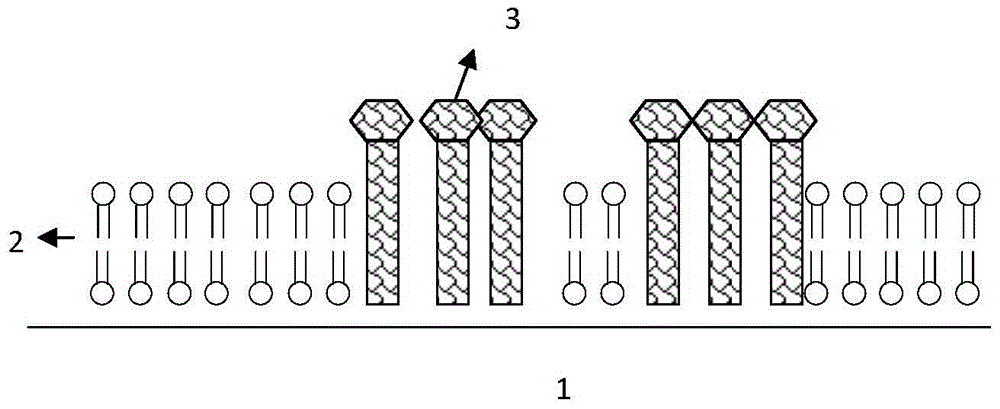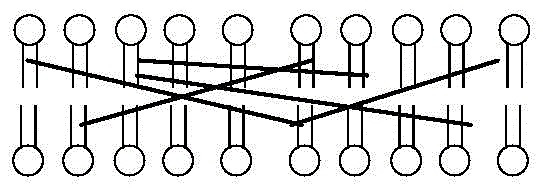A method using liquid chromatography bilayer stationary phase
A bilayer, liquid chromatography technology, applied in material separation, analytical materials, measurement devices, etc., can solve the problems of stationary phase contamination, conflicting research purposes, proteins affecting separation, etc., to avoid non-specific binding, reduce time and desired effect
- Summary
- Abstract
- Description
- Claims
- Application Information
AI Technical Summary
Problems solved by technology
Method used
Image
Examples
Embodiment Construction
[0039] Select silica particles as the stationary phase, wash with anhydrous solvent, and put it into an organic solvent after drying. The organic solvent is preferably free of water (toluene can be used), and it can react with the modified amphoteric substance (Y) by adding Silicon coupling agent (ATPS):
[0040]
[0041] Amino groups are formed on the surface of the silica.
[0042] After the reaction is completed, centrifuge to separate the activated silica on the surface, and react with Y and fatty acid after drying (the fatty acid used is a straight-chain carboxylic acid containing 42 carbon atoms), and react in an organic solvent under heating conditions to form an amide bond Modify the amphoteric substances and non-polar groups on the surface of silica, centrifuge, wash and dry, mix with the unmodified amphoteric substance (X) in an organic solvent, the solvent is preferably chloroform, after uniform mixing, use an inert gas Dry as vibes.
[0043] The Y is 16:0 Glut...
PUM
 Login to View More
Login to View More Abstract
Description
Claims
Application Information
 Login to View More
Login to View More - Generate Ideas
- Intellectual Property
- Life Sciences
- Materials
- Tech Scout
- Unparalleled Data Quality
- Higher Quality Content
- 60% Fewer Hallucinations
Browse by: Latest US Patents, China's latest patents, Technical Efficacy Thesaurus, Application Domain, Technology Topic, Popular Technical Reports.
© 2025 PatSnap. All rights reserved.Legal|Privacy policy|Modern Slavery Act Transparency Statement|Sitemap|About US| Contact US: help@patsnap.com



